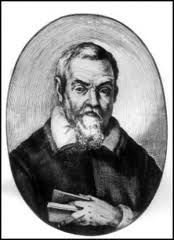Biology
- Catabolic And Anabolic
What exactly are Catabolic and Anabolic reactions?Catabolic and anabolic reactions are both metabolic processes that go to support an organisms metabolism. Catabolic reactions make energy for the cell to use by breaking down large molecules...
- #86 Energy And Atp
All living organisms need a continuous supply of energy to maintain their metabolism. They must absorb either light energy in photosynthesis or chemical potential energy to do the work necessary to stay alive. Such work includes: ? Anabolic reactions:...
- Thermometer
Term: thermometerLiterally meaning: "heat meausure"Origin: Anc Greek??????/thermos(=warm) >????/thero(=to warm)??????/metron (=meausure)Coined/HistoryThe first crude clinical thermometer was invented by Italian Santorio Santorio who put a numerical...
- Metabonomics, Metabolonomics
Term: metabonomics, metabolonomics Origin: Anc Greek ????????/metaboli(=change)?????/nomos(=law)-omics is a suffix which originally was used in word ?genomics> genome =gene + chromosome in order to indicate the complete set of chromosomes and the genes...
- Metabolism
METABOLISM All the biochemical reactions taking place inside a living system together constitute metabolism. E.g.GlycolysisKreb's cycleRespirationPhotosynthesis Removal of CO2 from amino acids to form amine.Removal of amino group in a nucleotide...
Biology
metabolism, anabolism, catabolism)
Term: metabolism
Origin: Anc Greek The modern English word "metabolism" comes from the Greek ????????????/metavolismos that derived from noun ????????/metabole, (=change) > ????/meta(=over, after) +???????/vallein (=to thrown).
????????????/Catabolism > ????/cata (=to throw down) + ???????/vallein (=to thrown).
???????????/anabolism> ???/ana (=to throw up) + ???????/vallein (=to thrown).
 |
| Santorio Santorio (b. 1561 d. 1636) |
Coined: The concept of metabolism dates back to Ibn al-Nafis (1213-1288), who stated that "the body and its parts are in a continuous state of dissolution and nourishment, so they are inevitably undergoing permanent change." Later in 1614 Santorio Santorio?s tome "Ars de statica medecina" was explained in detail his series of pain-staking and time-consuming experiments. First, Santorio used a steelyard balance and he suspended a chair to it. Then, he sat on the chair and had the weight taken and recorded during several stages. The situations were prior to having a meal and again after finishing it; while sleeping; as well as when he was working, having sex, and even while undergoing a fast. Santorio is known for his meticulous measurements of his urine and feces, which he compared to his dietary intake. Because the measurements of his waste was always lower, he proposed the concept of ?insensible perspiration? (sweat, basically) to explain the divergence in measurements. Later Franklin Church Bing (1902-1988) in 1971 used the word ?metabolism? in connection with a 1743 citation in his article on Dr John Lining (1708-1760).
Definition:
The complete set of biochemical reactions that take place in living cells comprising both anabolism (synthesis of complex molecules from simpler ones) and catabolism (breaking down of complex molecules into simpler ones with the liberation of energy).
Refferences
William J. Darby and Patricia B. Swan Franklin
Runon derivatives :
- Catabolic And Anabolic
What exactly are Catabolic and Anabolic reactions?Catabolic and anabolic reactions are both metabolic processes that go to support an organisms metabolism. Catabolic reactions make energy for the cell to use by breaking down large molecules...
- #86 Energy And Atp
All living organisms need a continuous supply of energy to maintain their metabolism. They must absorb either light energy in photosynthesis or chemical potential energy to do the work necessary to stay alive. Such work includes: ? Anabolic reactions:...
- Thermometer
Term: thermometerLiterally meaning: "heat meausure"Origin: Anc Greek??????/thermos(=warm) >????/thero(=to warm)??????/metron (=meausure)Coined/HistoryThe first crude clinical thermometer was invented by Italian Santorio Santorio who put a numerical...
- Metabonomics, Metabolonomics
Term: metabonomics, metabolonomics Origin: Anc Greek ????????/metaboli(=change)?????/nomos(=law)-omics is a suffix which originally was used in word ?genomics> genome =gene + chromosome in order to indicate the complete set of chromosomes and the genes...
- Metabolism
METABOLISM All the biochemical reactions taking place inside a living system together constitute metabolism. E.g.GlycolysisKreb's cycleRespirationPhotosynthesis Removal of CO2 from amino acids to form amine.Removal of amino group in a nucleotide...
